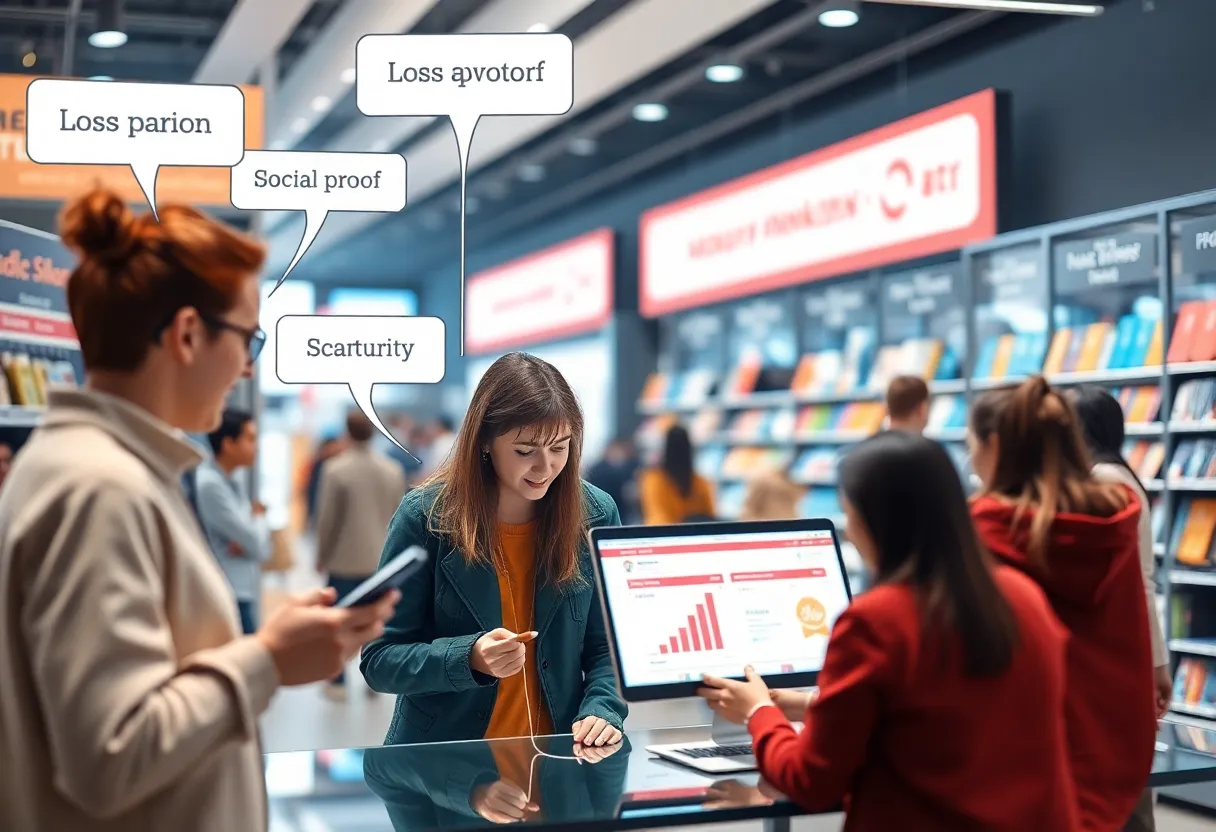How Can You Use Behavioral Economics to Influence Customer Decisions in Digital Marketing?
Behavioral economics merges psychology and economics, providing insights into how individuals make decisions based on cognitive biases and emotional responses. In the realm of digital marketing, understanding these principles can significantly enhance strategies aimed at influencing customer behavior. This article explores core concepts from behavioral economics and practical applications, guiding marketers on how to engage consumers more effectively.
Understanding Behavioral Economics
Behavioral economics departs from traditional economic theory, which assumes people make rational decisions given all relevant information. Instead, it recognizes that psychological factors often lead to irrational decision-making. Key principles include:
- Loss Aversion: People tend to prefer avoiding losses over acquiring equivalent gains.
- Anchoring: Initial exposure to a number sets a reference point for future judgments.
- Decoy Effect: Introducing less attractive options can increase the attractiveness of a desired choice.
- Social Proof: Individuals often look to others’ behavior for cues on what actions are appropriate.
- Scarcity: Perceived scarcity can enhance the desirability of an item or service.
Applying Behavioral Economics in Digital Marketing
1. Leveraging Loss Aversion
In digital marketing, leverage loss aversion by emphasizing what customers might lose if they do not make a purchase. For instance, instead of focusing solely on discounts, frame promotions around potential loss:
- Examples: “Don’t miss out on savings!” instead of “Get 20% off!”
- Use urgency to highlight missed opportunities, such as “only 2 left in stock!”
2. Utilizing Anchoring Techniques
Anchoring can significantly shape customer perceptions of value. By presenting an anchor price, customers evaluate their decisions relative to this reference point:
- Showcase original prices alongside sale prices to create a perceived discount.
- Implement tiered pricing strategies, allowing customers to compare similar products at different price points, enhancing the value of the higher-priced item.
3. Implementing the Decoy Effect
To steer customers toward profitable choices, use the decoy effect. Present a third, less appealing option that makes the desired option seem more attractive:
- For example, if you offer two subscription plans, a third plan with less favorable terms can make the preferred plan appear as the smarter choice.
- Ensure that the decoy is strategically positioned to highlight the advantages of the targeted option without being overtly misleading.
4. Highlighting Social Proof
Social proof can effectively enhance trust and encourage purchases. Utilize testimonials, reviews, and user-generated content to demonstrate product popularity:
- Showcase customer reviews prominently on product pages.
- Highlight user statistics, such as “Join over 10,000 satisfied customers!” to build legitimacy.
5. Creating a Sense of Scarcity
Scarcity triggers urgency in decision-making. When customers perceive a product as limited, they may be more likely to buy:
- Implement timed offers, like flash sales with countdown timers.
- Indicate low stock levels clearly on product pages to encourage immediate purchases.
Crafting Effective Messaging with Behavioral Insights
The message you convey is critical in leveraging behavioral economics. Crafting communication that resonates with customers can significantly influence their decisions:
1. Emphasizing Benefits Over Features
People respond better to emotional appeals. Highlight how your product improves their lives rather than detailing technical specifications:
- Transform features into relatable benefits, making it easier for customers to visualize the product’s impact.
- Utilize stories or case studies to make benefits tangible and relatable.
2. A/B Testing for Optimal Results
Implement A/B testing to determine which marketing strategies resonate best with your audience. Behavioral economics insights can guide the creation of different variations:
- Test variations in messaging styles, visual layouts, and emotional appeals.
- Implement changes based on customer behaviors observed during tests, optimizing strategies over time.
3. Personalizing Experiences
Personalization adds value to the customer experience, enhancing engagement and fostering loyalty:
- Utilize data analytics to tailor marketing messages to individual customer preferences and behaviors.
- Dynamic content on email campaigns based on previous interactions can effectively capture attention and drive conversions.
Addressing Psychological Barriers
Understanding and addressing potential psychological barriers can further refine your digital marketing strategies:
1. Reducing Cognitive Load
A crowded interface or complex decision-making can overwhelm customers. Simplify their journey:
- Implement clear navigation and intuitive layouts for a seamless browsing experience.
- Limit options to reduce decision fatigue—too many choices can lead to paralysis.
2. Building Trust and Reducing Anxiety
Customer anxiety often inhibits purchasing decisions. To alleviate this:
- Clearly present return policies and customer service availability to instill confidence.
- Utilize security seals and ensure transparent transactions to foster trust in your e-commerce platform.
Continual Learning and Adaptation
Behavioral economics is not static. Continually monitor consumer behaviors and market trends to adapt your strategies accordingly:
- Conduct regular surveys to gather insight into customer preferences.
- Stay informed about emerging trends in behavioral economics to innovate your marketing approaches.
Final Thoughts
Incorporating insights from behavioral economics into digital marketing strategies can significantly enhance customer engagement and decision-making. By understanding psychological drivers, marketers can craft messages, design experiences, and ultimately influence consumer behavior more effectively. The key lies in leveraging these insights wisely, continually testing and refining approaches to keep pace with ever-evolving consumer needs. Ultimately, a well-rounded understanding of behavioral economics can lead to more fruitful marketing efforts, higher customer satisfaction, and increased conversion rates.








